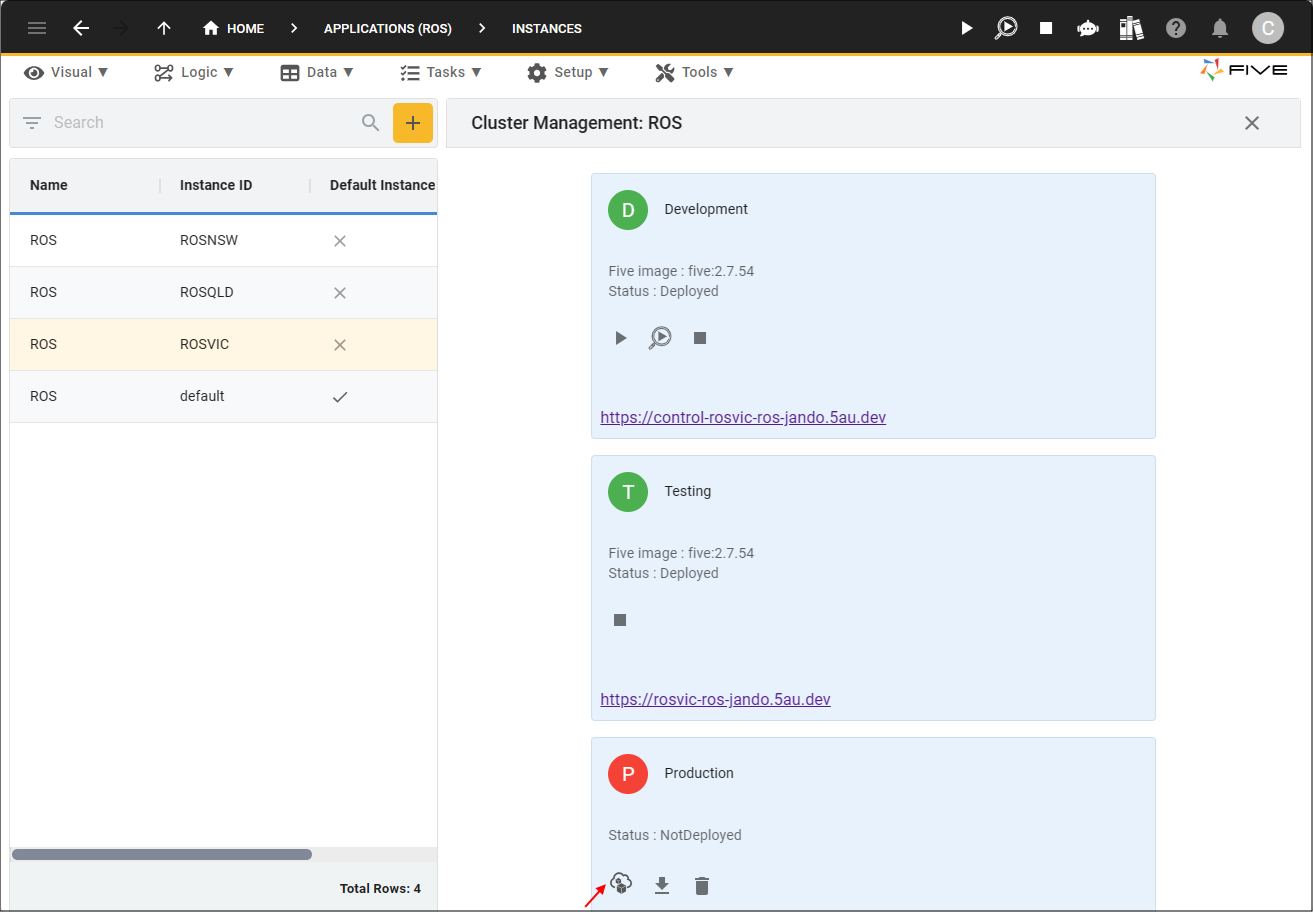Deploy to the Web
Last updated 15/05/2024
An instance of your application progresses through three deployments; development, testing, and production. It is recommended that you read the chapter Deployment Environments to understand each type of deployment and who can deploy to each environment.
You must deploy your application in the development environment before it can be deployed to the testing environment, and the testing environment must be deployed before you can deploy to the production environment.
In the event of a timeout, wait for one to two minutes and click the Run button again. The Run button will show in the toolbar but the location can't be found yet because the DNS has not propagated.
Deploy to Development
You can have many instances of your application. Five will initially create an instance of your application for you and set this record as the default when you first save an application record. Only one instance of your application can be the default. The default instance record will have the Deploy to Development button in Five's toolbar enabling you to deploy your application from any view in Five.
1. Click the Deploy to Development button.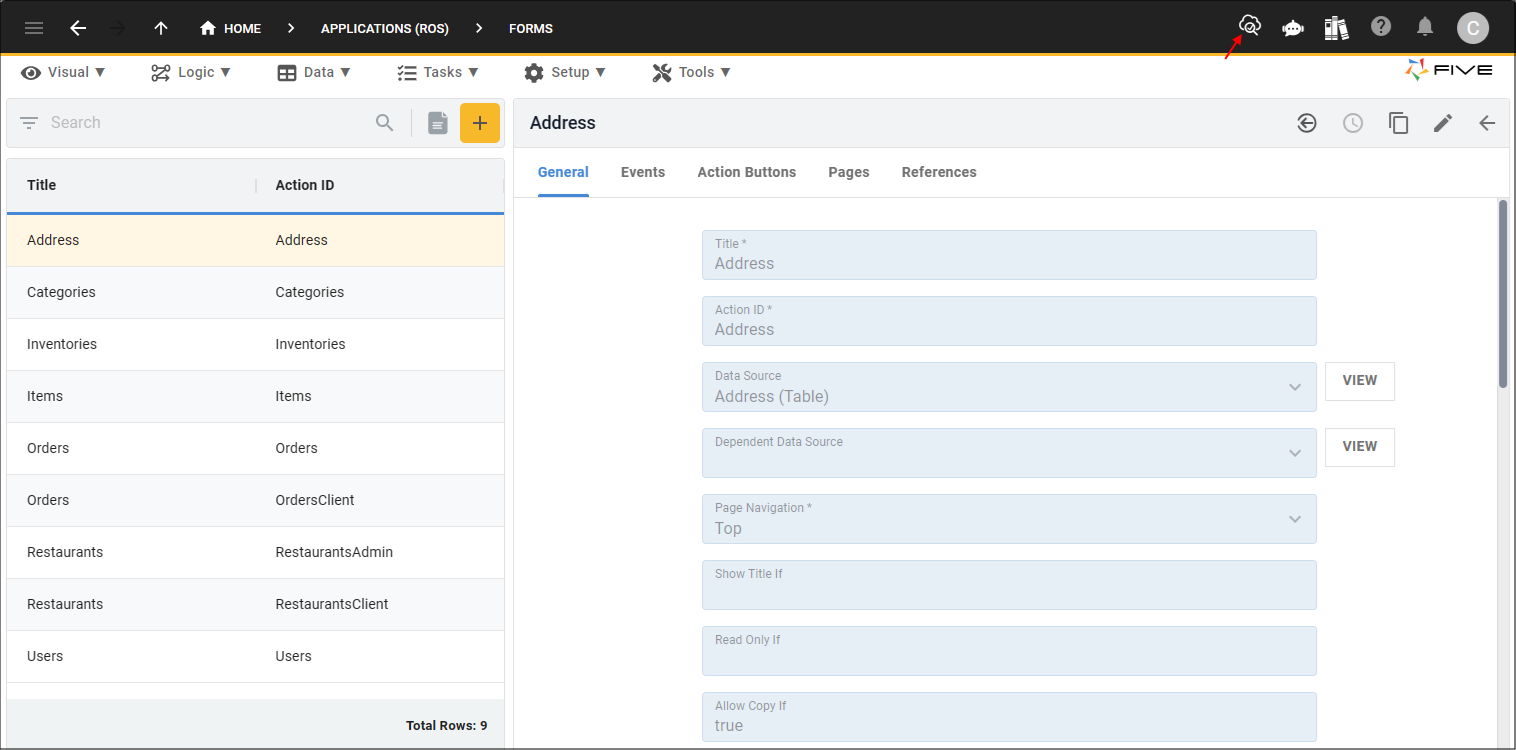
Once you deploy your application, the Deploy to Development button will be replaced with the following buttons:
Run: With your application deployed to the development environment, you use the Run button each time you want to see the development changes you have made.
Run with Inspector: Run your application with Five's inspector functionality to help you debug your code.
Remove from Deployment: This button will bring down the container holding your development instance. Next time you deploy to the development environment, a new container will be created to hold the development instance.

Deploy an Instance From the Cluster Management
All instances of your application can be deployed from the Cluster Management. If you wish to deploy an instance of your application that is not set as the default, you will need to deploy it using the Cluster Management.
1. Navigate to the Instances view by selecting Setup in the menu and Instances in the sub-menu.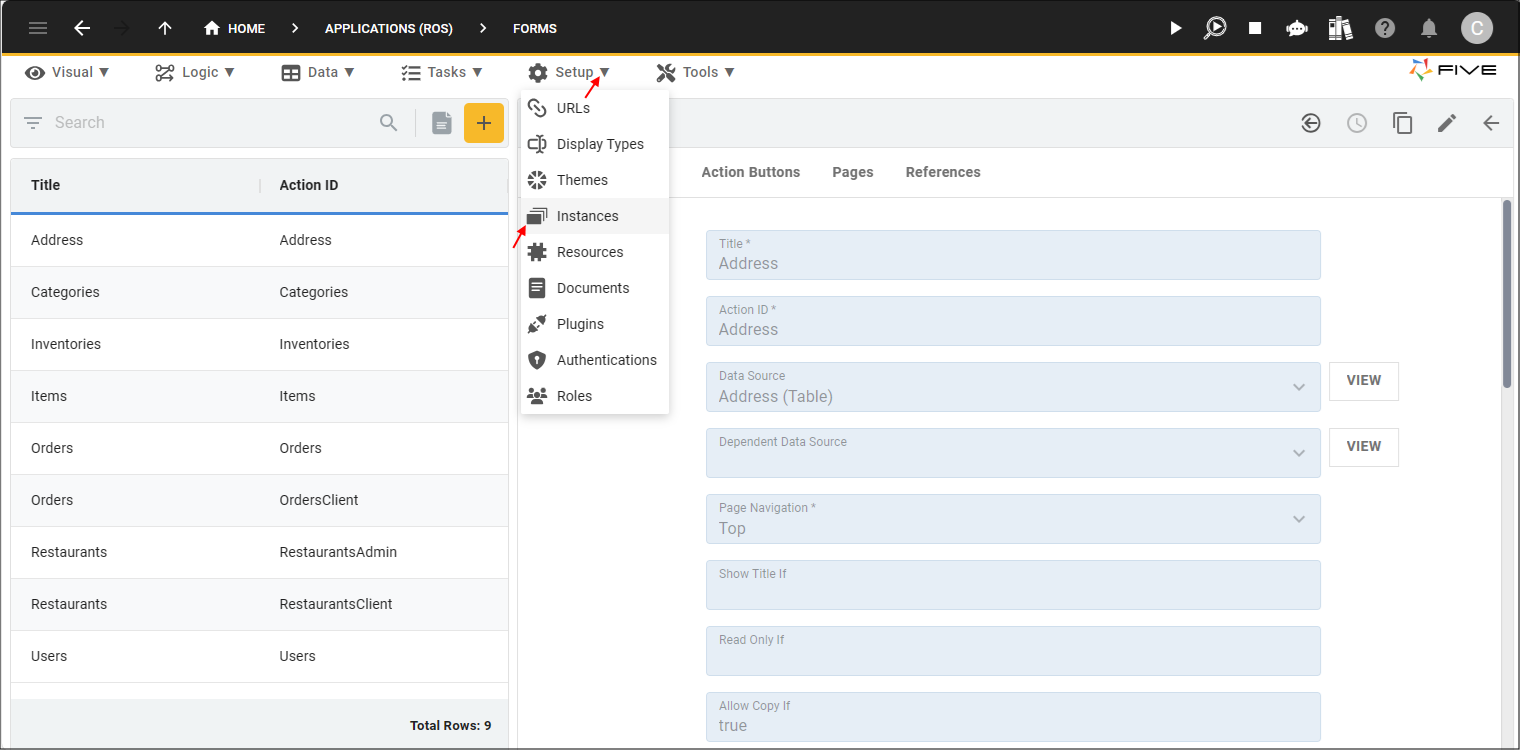
2. Select the instance record you want to deploy to the development environment.
3. Click the Cluster Management button.
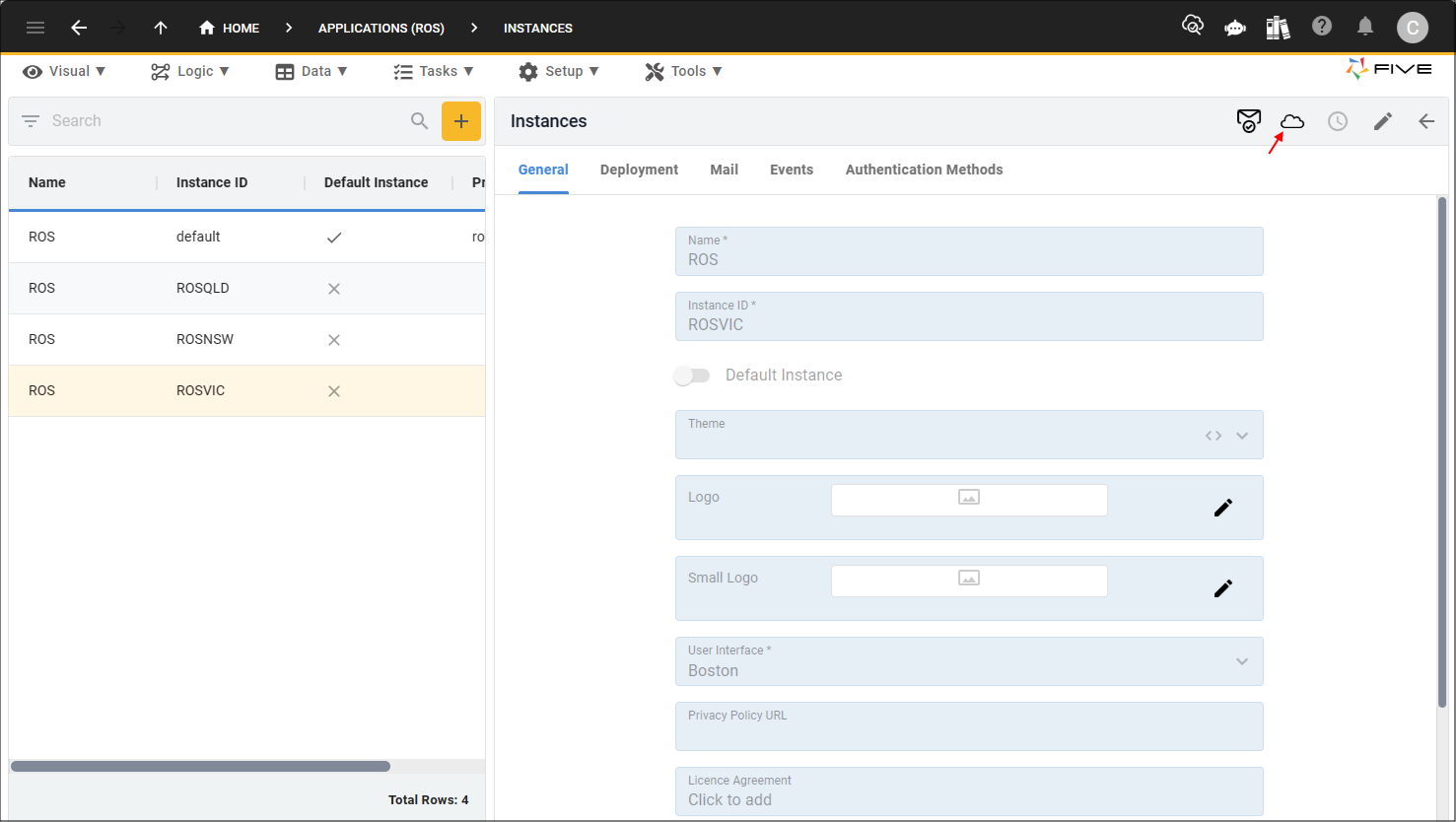
4. Click the Deploy to Development button.
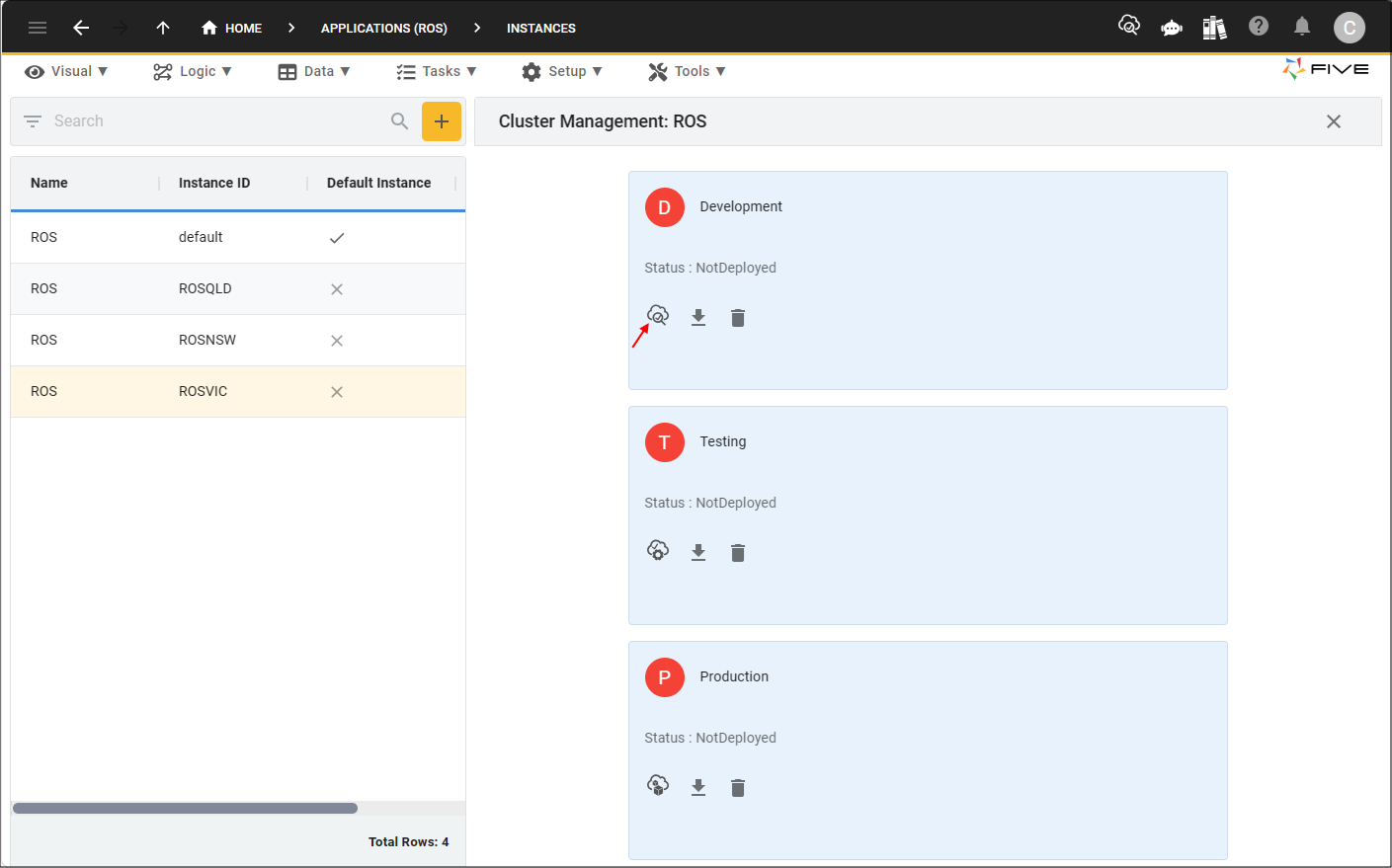
Deploying to Testing
To deploy an instance of your application to the testing environment, you must use the Cluster Management and the instance must of been deployed to the development environment first.
1. Select the instance record you want to deploy to the testing environment and click the Cluster Management button.

2. Click the Deploy to Testing button.
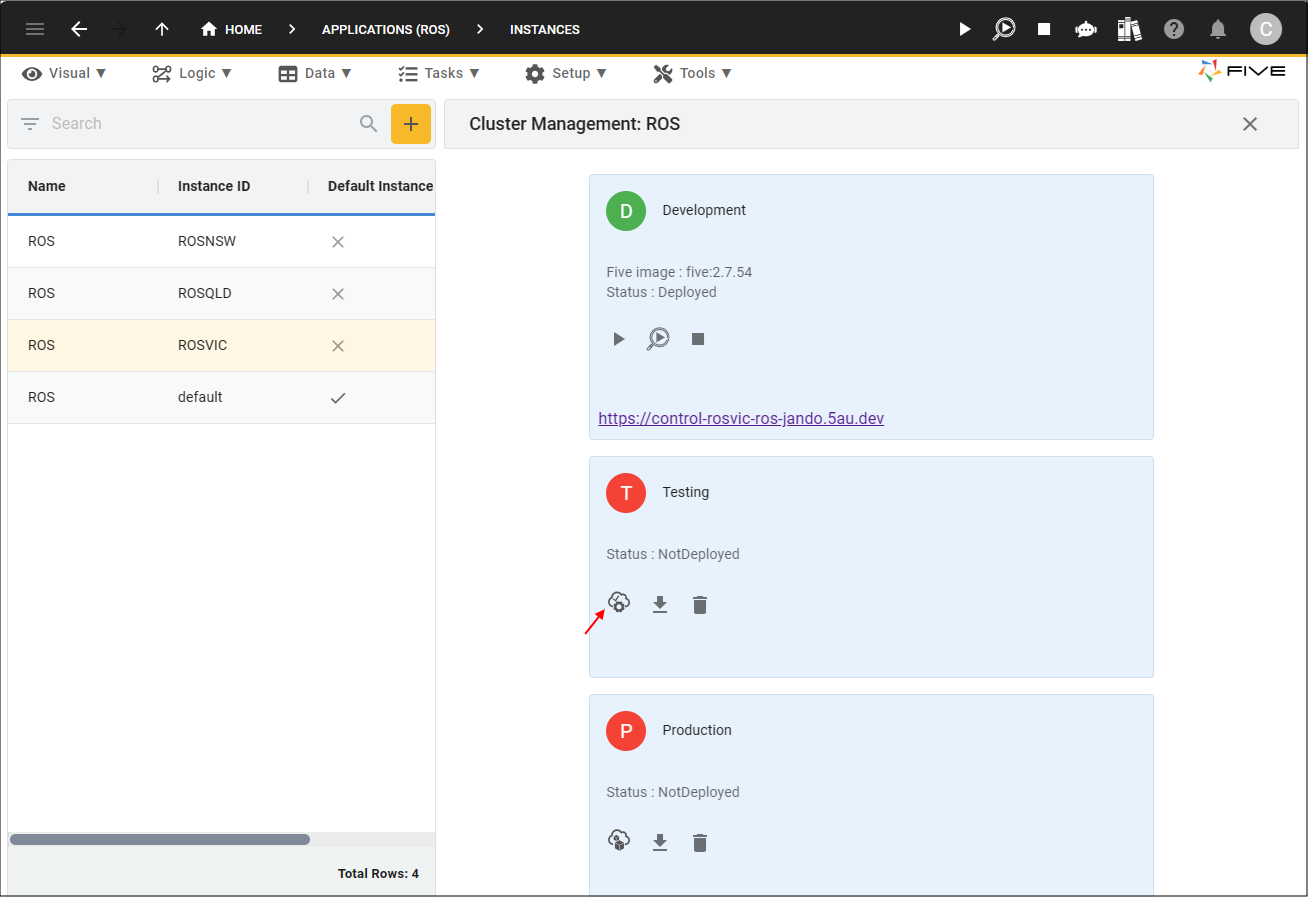
Deploying to Production
To deploy an instance of your application to the production environment, you must use the Cluster Management and the instance must of been deployed to the development and testing environments first.
1. Select the instance record you want to deploy to the production environment and click the Cluster Management button.
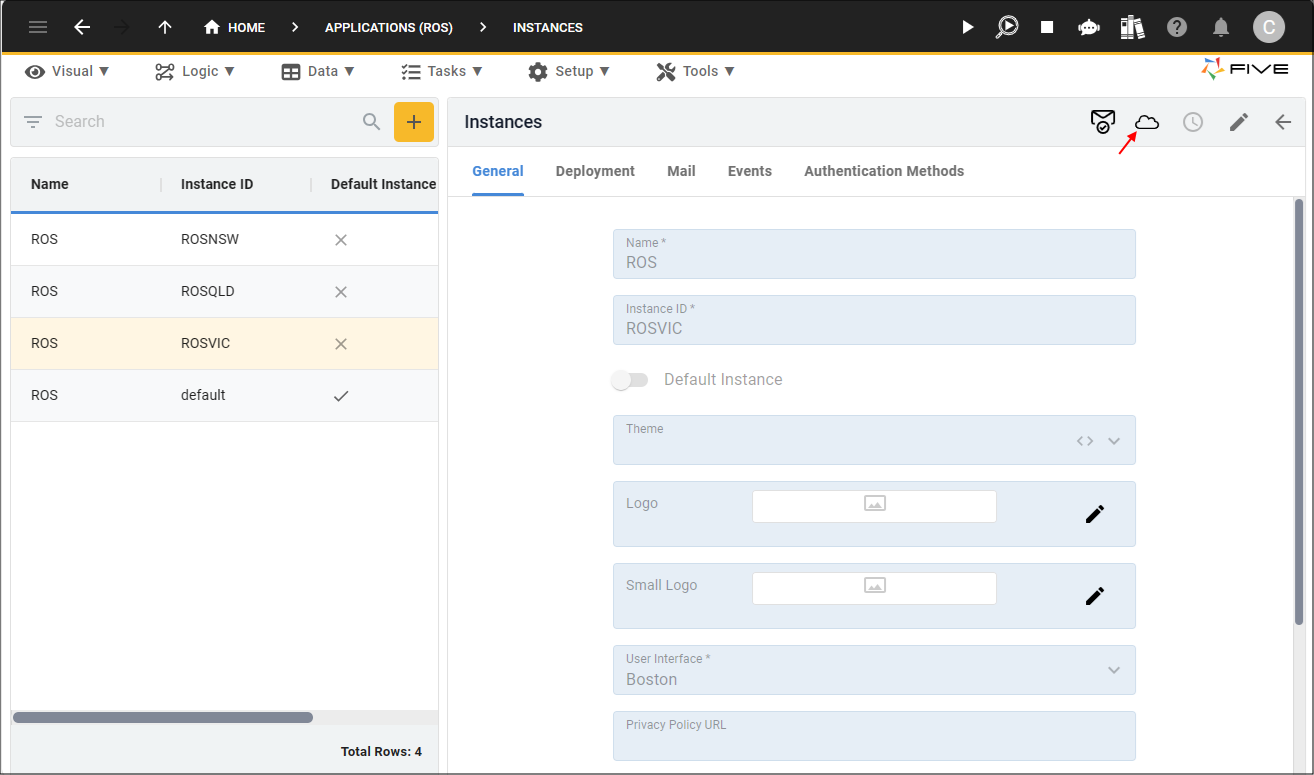
2. Click the Deploy to Production button.
